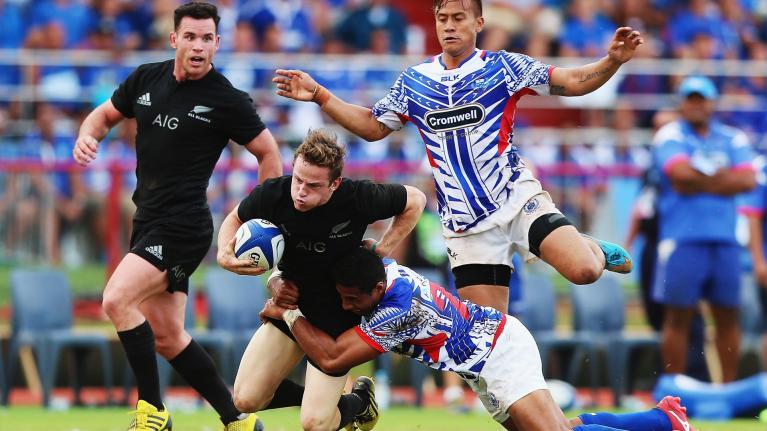A halfback who can play wing is a rare commodity that could be a valued World Cup addition for the All Blacks

My Kingdom for a hybrid back! Mike Rehu asks where have the scrum-halves who can play wing gone?
With the Rugby World Cup looming large the selectors are ruminating over how many specialist hookers and halfbacks they need to take. With a limit of only 31 players allowed in the official camps taking 3 of each means they’re generally stretched in the loose forwards and outside backs.
It’s a difficult balancing act and it ultimately means you’re praying for an injury free tournament. It also can transpire that sometimes you have to make cold, hard decisions at the end of pool play on players that are carrying injuries in stretched positions who might be one or two weeks away from getting on the paddock.
Last weekend when we were treated to seeing the Chiefs' Brad Weber score two tries against the Sharks, it crossed my mind that if you were vying for the third halfback spot it would be a valuable commodity to have the skills and flexibility to play on the wing.
Weber certainly has the pace for the outsides, the way he swooped on to Solomon Alaimalo’s shoulder like a jet fighter to take the last pass of an 80-metre move illustrated that. He also has stunning velocity off the mark; at least once a game he’ll choose to probe around the fringes with stunning results. Stats reveal that in this year’s Super Rugby he’s carried 44 times for 250 metres, an average over 6 metres, that’s impressive for a halfback. He’s gutsy, has good ball skills and is a leader.
The hybrid 9-wing has become less-fashionable in the international game but there have been some outstanding examples this century.
AUSTIN HEALEY 178cm 87kg
The World Cup-winning motor mouth was an extremely skillful player who slotted into 9, wing and also fly-half for England during his storied career.
FRANCOIS HOUGAARD 181cm 94kg
The strong Springbok played 18 tests on the wing and 26 at scrumhalf. He missed out on selection at the 2015 World Cup but was just named the English Premiership Player of the Month for April. Would Rassie Erasmus consider his attributes alongside Faf de Klerk and Embrose Papier for this year’s edition?
With these two examples, you can see a palpable difference in size with Weber (he is listed as 172cm and 75kg) and that could be a major issue, but then you look at players like Rosco Speckman and Damian McKenzie. Height doesn’t have to be a negative especially if combined with taller athletes like Jordie Barrett and Ben Smith in the backfield.
One of the All Blacks' most legendary smaller sized players was a rooster called Grant Batty. At 165cm and 65kg you’d be fooled into thinking Batty was too small to play rugby, let alone test matches. The flame-haired spark started as a club halfback but fabled coach Bill Freeman pushed him to the wing and he quickly became an All Black regular. He was packed with power and would smash through players much bigger and less willing.
He would back down to nobody, I once saw him sprint 40-metres from his wing to sort out hard man Frank Oliver at a line out that disintegrated into a swingfest. He was smart enough to run as fast back to his wing after poking Oliver a couple of times but when you see Weber run you know is 100% committed, just like Batty.
A halfback who can play wing would be such an asset for teams in our World Cup and Brad Weber would be a brilliant swingman for the Men in Black.
Rugby Australia on high alert:
Latest Comments
Interesting to see how many of the m.p.players were playing similar to Arde Savea in refusing to let themselves be tackled just continue to pump their legs and drive forward. Definitely think the saders will be back but I agree it was similar to watching the All Blacks of 23 early 24
Go to commentsYeah already ahead of say Christie for me.
That pair (Williams was good in the early games I watched) have played every game? Could be a good thing for the Highlanders who’ve been refreshing players.
Go to comments